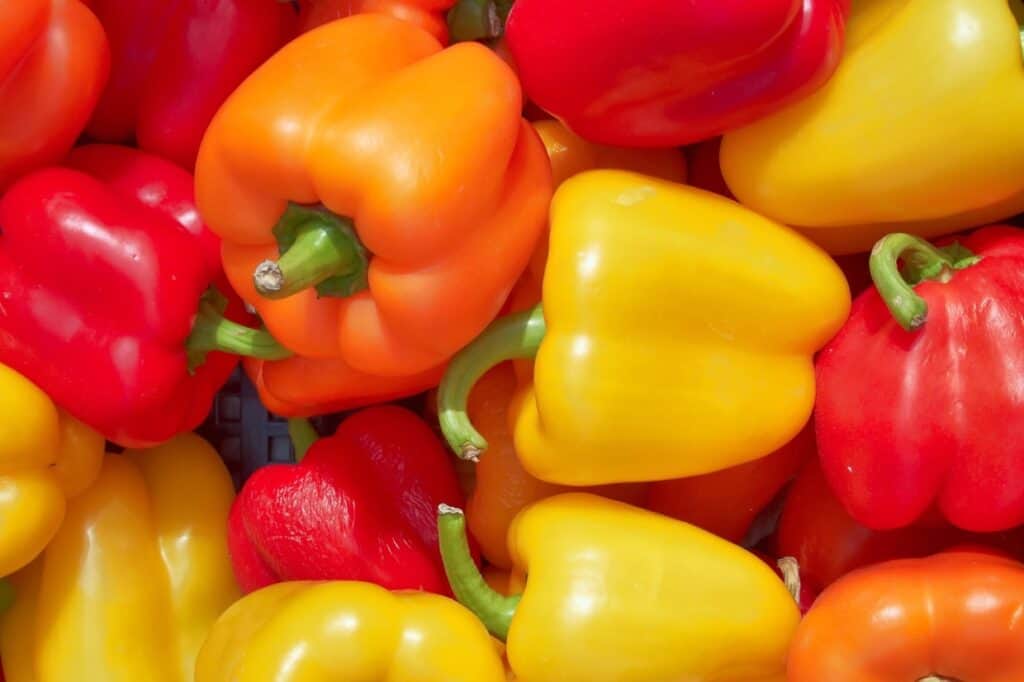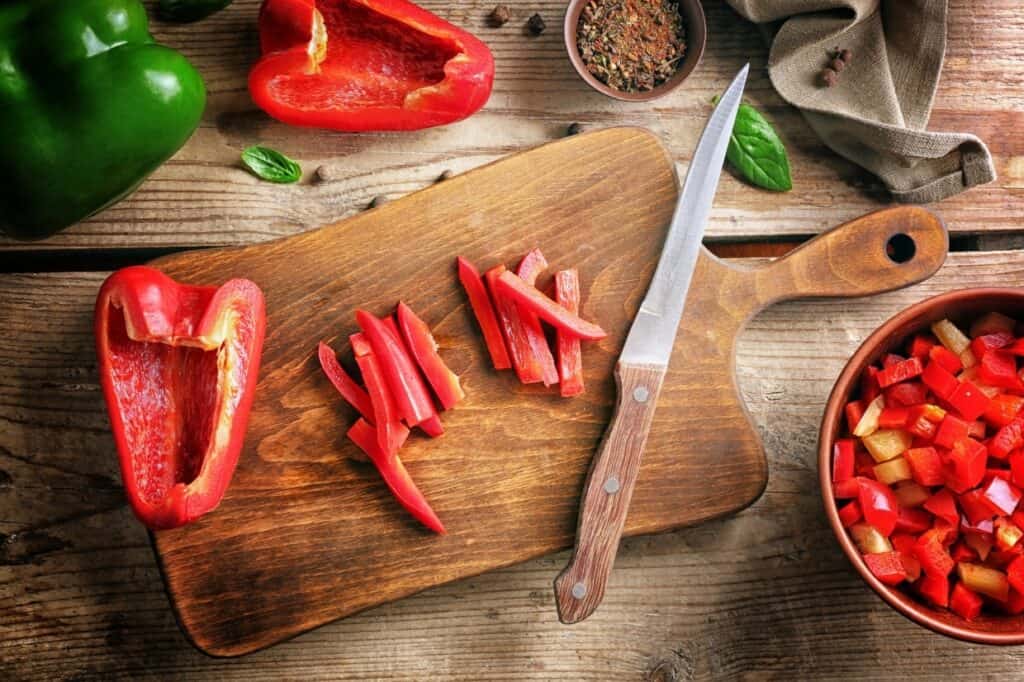Enjoying the vibrant flavor of peppers when they are ripe is one of the most enjoyable parts of summer. Freezing peppers is an efficient way to preserve their fresh taste and texture. This guide will cover everything you need to know to properly freeze peppers so that you can enjoy them throughout the year.

Freezing peppers
Freezing peppers is a relatively easy, quick and straightforward process. Follow these steps for the best results, and you’ll have a stash of peppers ready for any recipe.
Method 1: Freezing peppers whole or in pieces
This method is the most popular and allows you to freeze peppers either whole or cut into pieces, depending on how you plan to use them later.
Step 1: Start by washing and thoroughly drying the peppers.
Step 2: Remove the stems, seeds and inner membranes if desired. You can freeze them whole or slice them into strips, rings or pieces.
Step 3: Spread the pepper pieces on a baking sheet in a single layer and freeze until solid. This prevents them from clumping together.
Step 4: Once frozen, transfer the peppers to freezer-safe bags or containers. Remove as much air as possible before sealing to prevent freezer burn.
Method 2: Freezing cooked peppers
If you prefer to have pre-cooked peppers ready to go, this method involves cooking them before freezing.
Step 1: Cook the peppers by sautéing or roasting them until they reach your desired level of doneness. This will take five to 10 minutes for sautéed peppers. Roasted vegetables take about 30 minutes.
Step 2: Allow the cooked peppers to cool completely.
Step 3: Transfer the cooled peppers to freezer-safe plastic or reusable silicone bags. Remove excess air from the bags, seal them tightly and freeze them.
Method 3: Blanching peppers
While blanching is a common practice for preserving certain vegetables before freezing, it is not frequently done with peppers. Most people prefer to freeze peppers raw because they retain their texture, flavor and nutritional value quite well without the need for blanching. However, blanching is still an option for those who wish to take an extra step to retain color in their peppers.
If you decide to blanch your peppers before freezing, follow these instructions:
Step 1: Start by preparing an ice bath. Fill a large bowl with cold water and plenty of ice cubes.
Step 2: Bring a large pot of water to a rolling boil. Meanwhile, wash the peppers thoroughly and remove the stems, seeds and inner membranes. Cut the peppers into slices, rings or pieces, depending on how you plan to use them later.
Step 3: Place the pepper pieces into the boiling water. Blanch the peppers for about two to three minutes. It’s important not to overcook them; you want them to be slightly softened but not fully cooked.
Step 4: Immediately transfer the blanched peppers to the ice bath to cool rapidly. Leave them in the ice water until they are cooled completely.
Step 5: Drain the peppers well and pat them dry. Spread them out on a baking sheet in a single layer and freeze until solid. Once frozen, transfer the peppers to freezer-safe bags or containers, removing as much air as possible before sealing.
Reheating and serving frozen peppers
The best way to reheat frozen peppers depends on how they were prepared and your intended use.
Whole or sliced peppers
Frozen peppers can be used straight from the freezer, or you can thaw them in the refrigerator overnight. If using from frozen, add them directly to dishes like stir-fries, such as a vegetable yaki udon, casseroles or a simple pasta dish, like this aglio olio e peperoncino, allowing enough time for them to heat through.
“I use frozen peppers in soups, casseroles and even stir-fry recipes. The convenience of using frozen peppers cuts down on prep time and helps you get dinner on the table quicker. And it’s so easy to freeze them yourself!”
— Lucy, Southern Food and Fun

Cooked peppers
For cooked peppers, thaw them either in the microwave on the defrost setting or in the refrigerator overnight. You can also use a bowl of cold water to speed up the process by submerging the sealed bag of peppers until thawed. These peppers are perfect for recipes like fajitas, quesadillas or as toppings for pizza.
Feel free to add the peppers to the dishes while they’re still frozen, too. This option is best for items like soups, stews and sauces.
“We grow red, green and orange peppers in pots and in our garden, and I freeze them to use later in Mexican dishes and on pizzas. I slice some peppers and dice others, flash-freeze them on a pan and then into freezer bags so I can grab them as needed.”
— Sarita Harbour, Recipes From Leftovers
For added flavor, be sure to use plenty of herbs and spices in dishes using frozen vegetables. Popular choices include cilantro, basil and paprika.
Blanched peppers
You can thaw blanched peppers overnight in the refrigerator or in a bowl of cold water by submerging the sealed bag of peppers until they’re fully defrosted. While blanched peppers won’t retain their original crispness after defrosting, they have a pleasant, tender texture that’s perfect for cooked dishes like pasta sauces, soups and stews.
Final thoughts
Freezing peppers is a practical way to extend their life and ensure you have them available throughout the year. Whether you freeze them raw, cooked or blanched, each method is appropriate for different uses.
By following these freezing techniques, you can enjoy peppers in a variety of dishes year-round, preserving their fresh flavor and texture. Choose the method that best suits your cooking style and the dishes you plan to make. From a colorful stir-fry addition to a pop of flavor in a comforting stew, the addition of frozen peppers makes meal prep easier and more delicious.
Gen is a professional chef, writer and editor living in Southern California. She is the owner and recipe creator behind Two Cloves Kitchen, a food site featuring contemporary, California-inspired recipes. She has edited over 20 novels, short stories and essays for publication.